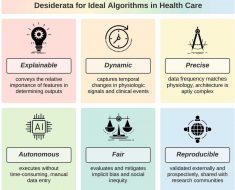An increase in the use of insulin pumps and continuous glucose monitoring (CGM) around the world is benefiting children with type 1 diabetes, new research finds.
An analysis of data for more than 25,000 participants aged 18 years or younger with type 1 diabetes at 101 SWEET centers revealed that among those who used an insulin pump and/or a CGM system, A1c levels were lower and there fewer episodes of diabetic ketoacidosis (DKA).
For patients who used pumps – but, surprisingly, not CGMs – rates of severe hypoglycemia were lower.
“Our findings show a major evolution in technology use over the past 10 years and a progressive improvement in the attaining of glycemic targets globally,” the researchers write.
The study, from the Better Control in Pediatric and Adolescent Diabetes: Working to Create Centers of Reference (SWEET) registry, was conducted by Roque Cardona-Hernandez, MD, Division of Pediatric Endocrinology, Hospital Sant Joan de D´eu, Barcelona, Spain, and colleagues and was published online March 2 in Diabetes Care.
Global SWEET Network Is “Really, Really Important”
The aim of the SWEET network is to establish worldwide standards of care for youth with diabetes. Contributing centers have been established in Europe, Asia/Middle East, Africa, Australia/New Zealand, and North and South America. The network receives funding from several diabetes device manufacturers.
In an interview, study co-author Sarah Corathers, MD, of the Division of Endocrinology, Cincinnati Children’s Hospital Medical Center, Cincinnati, Ohio, told Medscape Medical News that these new data “represent a collaboration of that registry service and allow us to start understanding trends in care and outcomes for children with type 1 diabetes across a variety of different geographic and healthcare systems, which I think is really, really important.”
The study is the first to report on glycemic control in youth since there has been worldwide agreement on the general A1c target of <7% for children.
That target, down from previous targets of 7.5% and higher, was first advocated by the International Society of Pediatric and Adolescent Diabetes and was adopted by the American Diabetes Association in early 2020.
“All centers now use that target. So, these results look at how we’re doing demographically and geographically…. There’s still room to improve, certainly,” Corathers said.
While noting that it’s difficult to derive individual clinical messages from worldwide information, she said, “I think that what these data tell us is that diabetes device technology can be helpful at outcomes that matter to patients and clinicians, namely, A1c, hypoglycemia, and hospitalization rates, and that the choice of technology can be individualized with the patient based on their preferences.”
In terms of advocacy, “We hope these data help push forward the narrative that as diabetes device technology advances, the opportunities for driving better outcomes for people with type 1 diabetes are there…. I hope these data will help promote making sure this technology is able to get into the hands of people with type 1 diabetes globally,” she stressed.
Insulin Pumps and CGMs Improve Outcomes
The study included 25,654 youth with type 1 diabetes. The median age of the patients was 13.8 years, and the duration of diabetes was at least 1 year (median, 1.2 years). Data covered the period from August 2017 to July 2019. Half of the patients were from centers in Europe; a quarter (26%) were from North America; 15% were from Asia/Middle East; 6%, Australia/New Zealand; and 3%, South America.
Just over a third, 37.4%, were not using diabetes devices (injections–no sensor); just under a third, 30.4%, were using both (pump + CGM sensor); 17.2% were using pump–no sensor; the remaining 15% were using injections + sensor.
Not surprisingly, regional gross domestic product (GDP) per capita and GDP health expenditure per capita were higher for those who used devices than for those who did not.
Overall, 37% of patients achieved the former pediatric A1c target of <7.5% (<58 mmol/L), and 21% achieved an A1c target of <7%. Individuals who used devices were significantly more likely to achieve target A1c. After adjustment for demographics, region, and health investment on GDP per capita, A1c levels for injections–no sensor, injections + sensor, pump–no sensor, and pump + sensor were 8.72% (71.8 mmol/L), 8.3% (67.2 mmol/L), 8.07% (64.7 mmol/L), and 7.81% (61.8 mmol/L), respectively (for all device groups, P < .01 compared to injections–no sensor).
Episodes of DKA were significantly lower among pump users than among the no-device group, both with sensor (P < .01) and without (P < .05). Of note, among those who took injections using a sensor, the use of a sensor did not significantly reduce the DKA rate (2.87 episodes with sensor vs 2.91 without). Those who used a pump but did not use a sensor had 2.02 DKA episodes; those who used a pump with a sensor had 1.98 episodes.
Compared to the no-device group, the proportion of patients who experienced severe hypoglycemia was significantly lower only for the pump–no sensor group (1.10 vs 2.35). The proportion was significantly higher in the injections + sensor group (4.25). There was no difference between the pump + sensor group and the injections–no sensor group (2.17 vs 2.35).
There could be several reasons for this unexpected apparent lack of advantage of the CGM in reducing severe hypoglycemia, Corathers said.
“It was surprising to us. It may be that some of the individuals who were motivated to use CGM already had predilection toward severe hypoglycemia,” she said.
She also noted that because only severe hypoglycemia was assessed by caregiver report, less-severe hypoglycemia could have occurred more frequently among those who were not wearing a sensor and that such events were not recorded. “This is a study limitation. It was population based, not a randomized trial with blinded sensors,” she pointed out.
She cautioned against interpreting the finding as evidence against the usefulness of CGM. “I would say CGM allows us to recognize a lot of glucose metrics that we miss with intermittent monitoring,” she said.
Moreover, CGM is an essential component of hybrid closed-loop systems (aka “artificial pancreas”), which are becoming increasingly automated and have been shown to improve time in glycemic targets.
Of those who used both devices, 8% were using such systems (defined as any pump that integrates CGM data and incorporates any kind of automation, such as insulin suspension on low, before low, or hybrid closed loop). The sample size was too small to establish comparisons, but it is expected that use will increase as hybrid closed-loop systems become more widely available, Corathers said.
“It’s a very dynamic field. We have optimism that these results will be improved in years to come as access to these technologies becomes more widespread…. It will certainly be an area of future study.”
The study was supported by the following SWEET corporate members: Abbott, Boehringer Ingelheim, Dexcom, Insulet, Eli Lilly and Company, Medtronic, and Sanofi. Corathers has disclosed no relevant financial relationships.
Diabetes Care. Published online March 2, 2021. Abstract
For more diabetes and endocrinology news, follow us on Twitter and Facebook.
Source: Read Full Article





